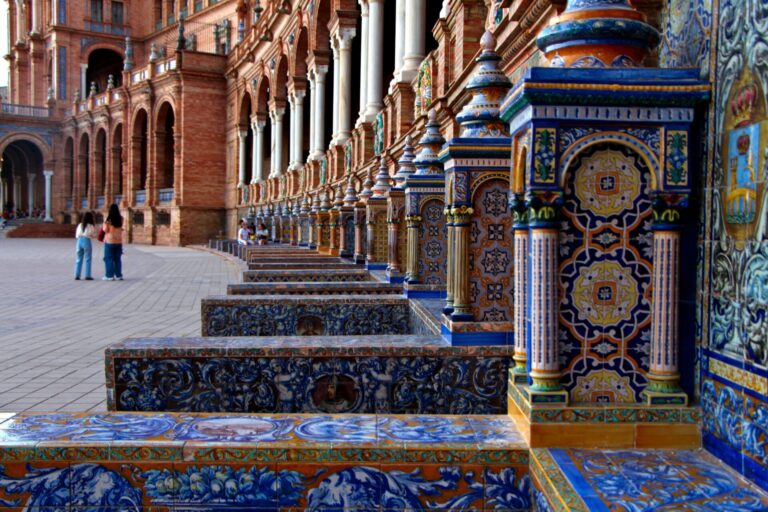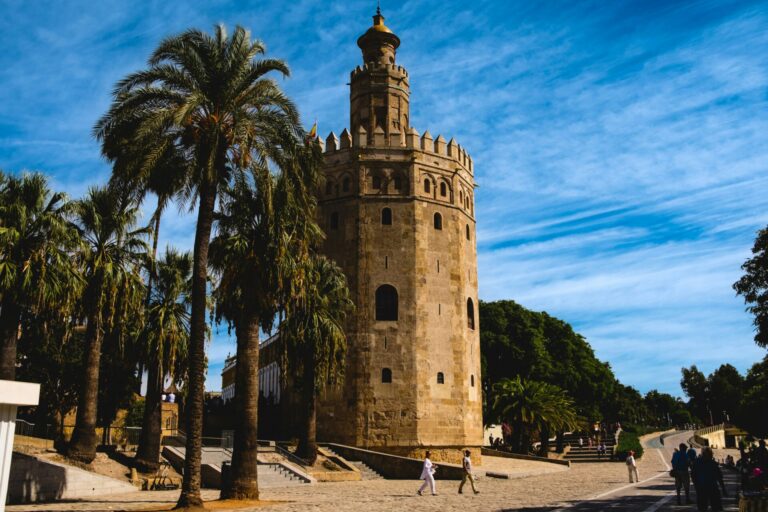Is Sevilla Full of Tourists?
Is Sevilla Full of Tourists?
Seville, the capital of Andalusia in southern Spain, is famous for its beautiful architecture, rich history, and lively culture. From flamenco dancing to stunning palaces, Seville attracts visitors from all over the world. But is Seville full of tourists? The answer is not simple and depends on different factors like the time of year, specific locations, and travel trends.
Why People Visit Sevilla
Famous Landmarks
Seville is home to some of the most famous landmarks in Spain. The Seville Cathedral is the largest Gothic cathedral in the world, and its bell tower, the Giralda, is a must-see. The Real Alcázar, a royal palace with Moorish influences, offers a look into the city’s diverse history. The Plaza de España, with its grand architecture and beautiful tiles, showcases Spanish Renaissance style. These attractions naturally draw many tourists. During peak seasons, such as spring and autumn, the number of visitors increases. Semana Santa (Holy Week) and the Feria de Abril (April Fair) are two big events that bring even more people to Seville, eager to enjoy the celebrations.
Local Culture
Seville is also known for its vibrant local culture. Flamenco dancing is a significant part of Seville’s identity, and visitors love to watch performances at local venues called tablaos. The city’s tapas culture is another highlight, where people go from one bar to another, trying small dishes and enjoying the local flavors.

How Tourism Affects Seville
Economic Benefits
Tourism plays a vital role in Seville’s economy. Hotels, restaurants, and local shops benefit greatly from the steady flow of visitors. This tourism creates jobs and supports the local economy, helping to keep the city lively and thriving.
Overcrowding Issues
However, too many tourists can also cause problems. Popular areas can become overcrowded, making it hard for both tourists and locals to enjoy the city. Major attractions like the Seville Cathedral and the Alcázar often have long lines, and visitors might feel rushed trying to see everything.
Seasonal Differences
Tourist numbers in Seville vary throughout the year. The busiest times are usually from March to June and September to October, when the weather is mild and pleasant. During these months, Seville can feel quite crowded. In contrast, the summer months of July and August are less busy due to the extreme heat, with temperatures often exceeding 40°C (104°F). Winter months attract fewer tourists but still see visitors looking to escape colder climates.
Discovering Sevilla’s Hidden Gems
Less Known Places
While the main attractions can be crowded, there are many lesser-known spots in Seville that offer a quieter experience. The Triana neighborhood, across the Guadalquivir River, is famous for its traditional ceramics and vibrant flamenco culture. Exploring its narrow streets, visitors can find charming local shops and less crowded bars and restaurants.
Authentic Experiences
Taking part in local experiences can also help visitors avoid the crowds. Cooking classes to learn traditional Spanish dishes or guided tours that explore the city’s history and legends can offer a more intimate and authentic understanding of Seville’s culture.
Sustainable Tourism in Seville
Like many popular destinations, Seville is focusing more on sustainable tourism practices. Efforts are being made to manage the flow of tourists and reduce the impact on the city’s infrastructure and residents’ quality of life. This includes promoting travel during off-peak seasons and encouraging visitors to explore less frequented areas.
Balancing Growth and Preservation
The challenge for Seville is to balance the economic benefits of tourism with the need to preserve its cultural and historical heritage. This requires careful planning and investment in infrastructure to support sustainable tourism. Educating tourists about respectful behavior and encouraging them to support local businesses is also crucial.

Tips for Visiting Sevilla
Best Times to Visit
To avoid the biggest crowds, consider visiting Seville during the shoulder seasons of late autumn and early spring. The weather is still pleasant, and there are fewer tourists. If you visit during peak seasons, try to visit popular attractions early in the morning or late in the afternoon to avoid long lines.
Explore Beyond the Main Attractions
While the Seville Cathedral and the Alcázar are must-see sites, take time to explore other parts of the city. Visit local markets, walk through lesser-known neighborhoods, and take part in local activities. This not only helps reduce overcrowding at major sites but also gives you a more authentic experience of Seville.
Respect Local Customs
When visiting Seville, it’s important to respect local customs and traditions. Dress modestly when visiting religious sites, be mindful of noise levels, and follow local rules and guidelines. Supporting local businesses and using public transportation can also help reduce your impact on the city.
Conclusion
So, is Seville full of tourists? Yes and no. Seville experiences high tourist activity, especially around its famous landmarks and during peak seasons. However, the city also offers many quiet spots and unique experiences for those willing to explore beyond the main tourist areas.
Seville’s charm lies in its ability to enchant both tourists and locals with its rich history, vibrant culture, and welcoming atmosphere. By embracing responsible tourism practices, Seville can continue to thrive as a beloved destination while maintaining its unique character and heritage. Whether you’re a first-time visitor or a seasoned traveler, Seville has something to offer everyone, making it a city worth experiencing despite the occasional crowds.
